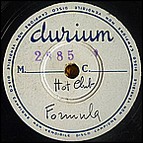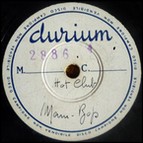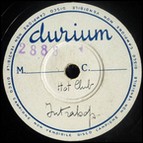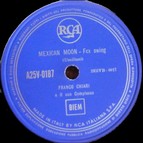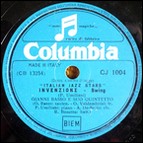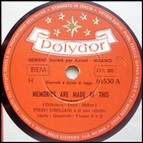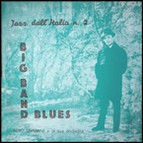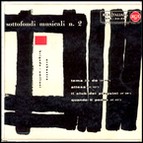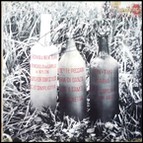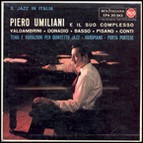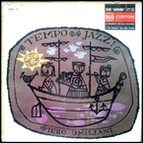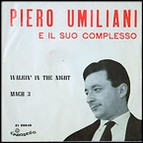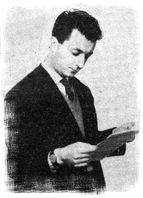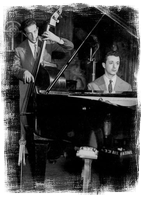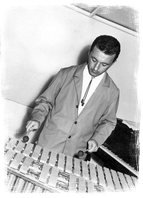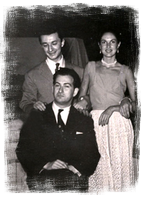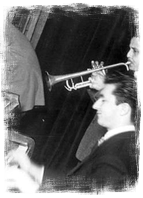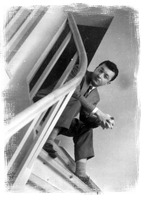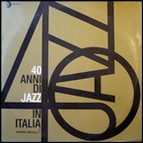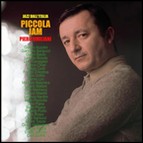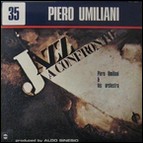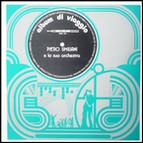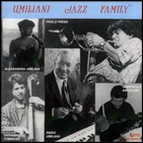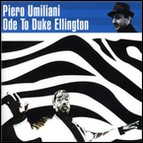Piero Umiliani - The Official Website - International Version
Main menu:
Jazz from Italy
Music, Maestro!
“In the 1940’s I used to live in Florence. One day I saw a record in a little store. The title of the album was “Hot Duke” edited by Mills Music in New York City. In Italy nobody knew who Duke Ellington was and listening to that kind of music was prohibited, illegal, so if you were caught you could even end up in jail!
The war started and every time I played "Mood Indigo" on the piano I remember telling myself that it was the most beautiful piece ever written. Such a sweet melody, so different from anything else I had heard and played until then.
Finally, when American troops arrived in Florence they brought along their V-Discs and 33RPM jazz albums. That’s how I discovered the rhythms and sounds of that music. This music became my life.”
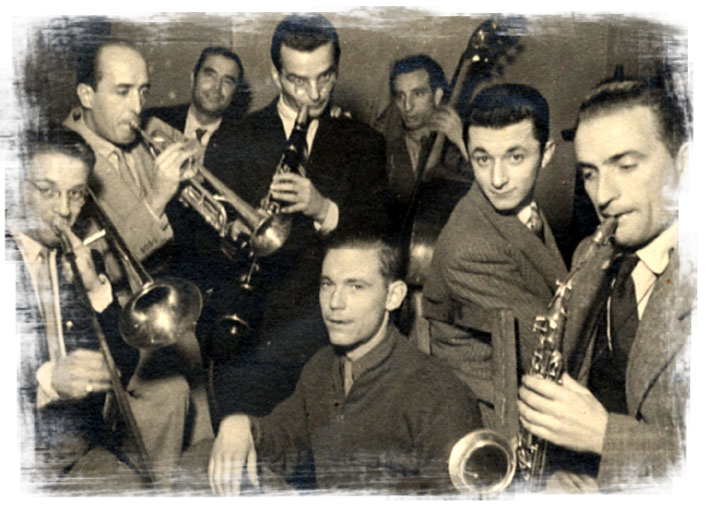
This is how Piero talks about his first encounter with the great American jazz that he always found so inspiring. Thanks to the presence of American soldiers in his city, he has the chance to play frequently for them in clubs. Piero plays with enthusiasm and satisfaction for this passionate audience. “Everybody wanted to dance, to celebrate the end of the war and to explore the pleasure of freedom – Umiliani says when interviewed on the radio and TV in the 1990’s - there weren’t many piano players… and also they were well paid.”
After his graduation from Law School in 1948, “to please the parents”, in 1952 Piero graduates in music from the Luigi Cherubini Conservatory.
The path is marked, music will be his life and so he plays the piano everywhere: in clubs, dance halls and city fairs.
He proposes jazz everywhere he goes, alternating it with Neapolitan songs and national radio hits.
He begins with original arrangements and then in 1952 he writes his first compositions.
The US is still his reference point, and he goes to Milan with his friends Basso, Valdambrini, Termini and Bonetto to record four tracks: “Formula”, “Mam-Bop”, “Papirologia” and “Intrabop”.
It is a private recording, the first example of Italian be-bop sponsored by Gianfranco Madini’s Jazz Friends Association.
These records, printed only in a few copies, mark the history of Italian jazz and represent the beginning of the Maestro’s career. Umiliani composes original themes like “Mexican Moon”, “Oppio”, the lucky “Chanel”, “Siesta” and “Formula” that are purchased by the Edizioni Club in Milan and played on the RAI radio by the orchestras of Carlo Savina, Angelo Brigada and Bruno Canfora.
Piero's Jazz 20 Samples Playlist
1) Mam-Bop
2) Piccola Suite Americana
3) Gassman Blues
4) Ritorno da Marte
5) Porta Portese
6) Aria di Danza
7) Invenzione
8) Mach 3
9) Chanel
10) Spiritual
11) Veemente
12) Tempo Jazz
13) Gianni e Oscar
14) Fast and Blues
15) Sequenze Ritmiche
16) Nostalgie Tripoline
17) Manhattan Blues
18) Una Bella Grinta
19) Fresu Fusion
20) Go, Go, Go
In 1955, RCA welcomes Umiliani’s new project with enthusiasm: an album of Neapolitan songs in Dixie style.
“Dixieland in Naples” mixes the styles of New Orleans and Naples, a daring operation that receives good reviews from the public and the press.
“Umiliani acted with delicacy and intelligence – Giancarlo Testoni writes in the Corriere Lombardo (30 May 1956) – developing his variations and keeping the Neapolitan mood of the melodies in his jazz arrangements.”
From these words it is easy to understand how risky it is to contaminate Neapolitan songs with New Orleans rhythms, but Umiliani wins this artistic bet.
Thanks to these experiments, Italian jazz starts now to be considered differently by the discographic industry.
On 18 and 19 January 1958 at the Sanremo Jazz Festival, Umiliani brings two original compositions, “Omaggio a John Lewis” and “Blues per il Nonno” that receive an enthusiastic response from the publc.
At this point Umiliani is working on a new project, a 10” microgroove jazz album, a bridge between the Italy and his inspirational country, that is finally released in 1957: “Da Roma a New York”.
Tracks Info:
1) taken from 78 rpm ''Mam-Bop'', 1951; 2) taken from the EP ''Piccola Suite Americana", 1963; 3) taken from the OST EP "I Soliti Ignoti", 1958; 4) taken from the EP "Sottofondi Musicali n. 3", 1958; 5) taken from the EP ''Piero Umiliani e il suo Complesso", 1960; 6) taken from the LP 10" "Da Roma a New York", 1957; 7) taken from the 78 rpm "Invenzione", 1952; 8) taken from the 7" single "Mach 3", 1962; 9) taken from the LP "Musica per Due", 1964; 10) taken from the LP "Jazz dall'Italia n. 2", 1967; 11) taken from the LP "Piccola Jam", 1968; 12) taken from the LP "Tempo Jazz", 1960; 13) taken from the 7" single "Gianni e Oscar", 1963; 14) taken from the LP "Piccola Jam", 1968; 15) taken from the LP "40 Anni di Jazz in Italia", 1963; 16) taken from the LP "Caratteristici", 1962; 17) taken from the LP "Album di Viaggio", 1979; 18) taken from the OST LP "Una Bella Grinta", 1965; 19) taken from the CD "Umiliani Jazz Family", 1990; 20) taken from the LP "Fischiando in Beat", 1969. For further informations please visit the Discography page.
This is one of the most important albums in Umiliani’s career. There are ten original tracks, an ambitious project that surprises and captures jazz lovers. The reviewer of Musica Jazz magazine, who usually writes about American artists, in the issue no. 11 dated November 1957 writes: “I can’t remember what other ambitious and successful attempt concerning jazz compositions has been made in Italy.”
“Da Roma a New York” is a seminal album in the history of Italian jazz. Actually, the album ends up in New York on the record player of international critic Douglas Hague, who reviews it in the English edition of the Jazz Journal. Hague writes a letter to Umiliani with these prophetic words: “I think it is only a matter of time before you have the chance to play with American jazz musicians and this will bring the best out of you”.
Two years later Chet Baker’s trumpet meets Piero Umiliani for the soundtrack of “L’Audace Colpo dei Soliti Ignoti”. Also, in 1958, director Mario Monicelli often listens to “Da Roma a New York” on his record player and this microgroove gives him the idea to use jazz in his film “I Soliti Ignoti”. Umiliani’s career takes off. The Maestro brings jazz for the first time in Italian cinema. He keeps experimenting in records like “Walking in the Night” and “New Sound from Italy” where he works together with the Basso-Valdambrini Octet. This last album goes overseas and it is reviewed in Down Beat (dated 29 September 1960), the jazz fans’ bible, where the Maestro receives a personal tribute: “Piero Umiliani, an Italian, wrote the arrangements for two of the eight tracks in this album (“Blues for Gassman” and “How Deep is the Ocean?”) and this not only brings interest for this record, but it also reveals great talent… Umiliani has an original and daring point of view which unites control and brio”.
In the following years he is very busy composing soundtracks but he does not forget his true love. In 1963, Piccola Suite Americana recorded for Cetra in the “Jazz in Italy” series receives an award as best jazz composition of the year. In 1968 he releases the double album “Piccola Jam”, a collection of his recordings from 1962 to 1967. The press greets the album as an “event”. Il Tempo (dated 20 August) proclaims that “Italian Jazz has its own anthology”. A critic in the Espresso states that “the two records are among the best ever produced by Italian jazz”.
In the 1970’s, the pop and rock era, Umiliani records “Jazz a Confronto n. 35” in his “Sound Work Shop” studio on Horo label. The album is an ode to Duke Ellington, played together with friends Santucci, Culasso, Boschi, Basso, Restuccia and other well known names in Italian jazz. Thirty years have passed since Umiliani had first seen Duke’s record in a small store in Florence and finally, now 48, he is ready to pay a tribute to his mentor and inspirer. In the same period Piero records an other tribute to Ellington, in electronic style, with the album "Golden Memories" for the label A.D.S. In 2000, these tracks are reprinted on the CD “Ode to Duke Ellington” (Easy Tempo ET 935) along with other particular versions of Ellington’s themes recorded by Umiliani during his career.
After a stop caused by a disease, jazz is Umiliani’s rebirth music. In 1990 he goes back to the recording studio with trumpet player Paolo Fresu, bass player Giovanni Tommaso, Giampaolo Ascolese at the drums and his daughter Alessandra as a vocalist. The result is “Umiliani Jazz Family”, his first album since 1982. The title is not only a homage to his daughter’s presence in the band but also to jazz music that, considered just like another member of the Umiliani family, has always been present in the happiest but also the most difficult moments of his life.
